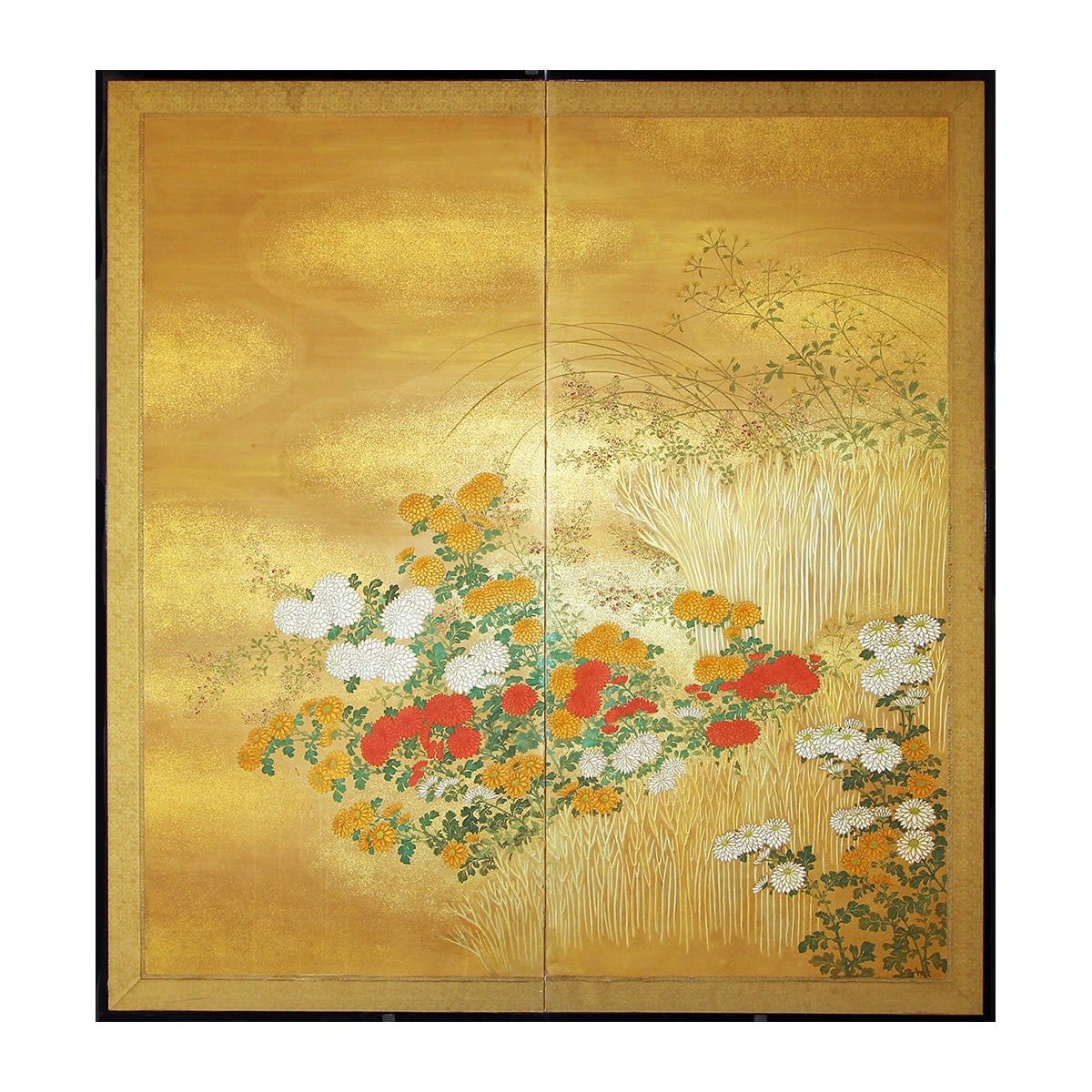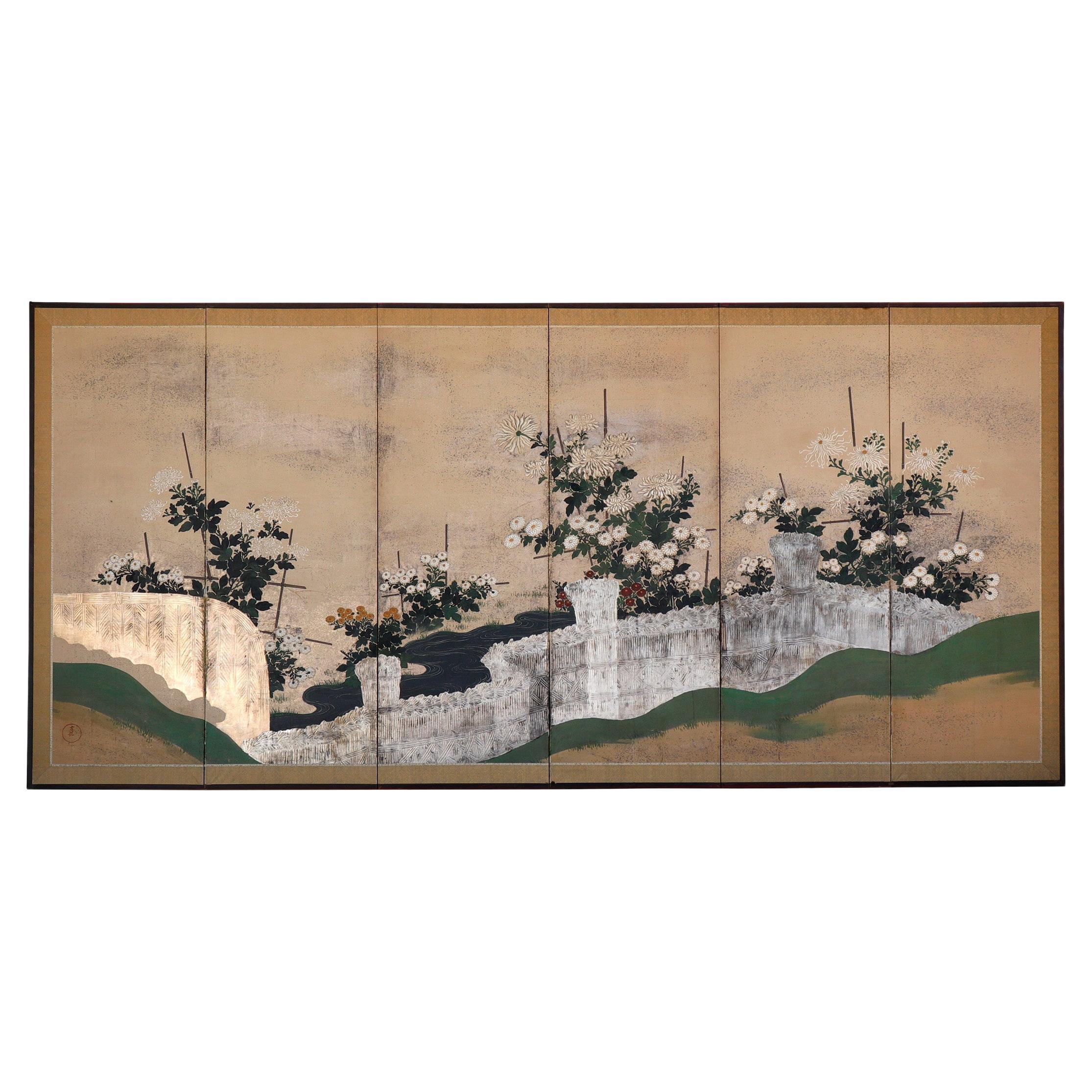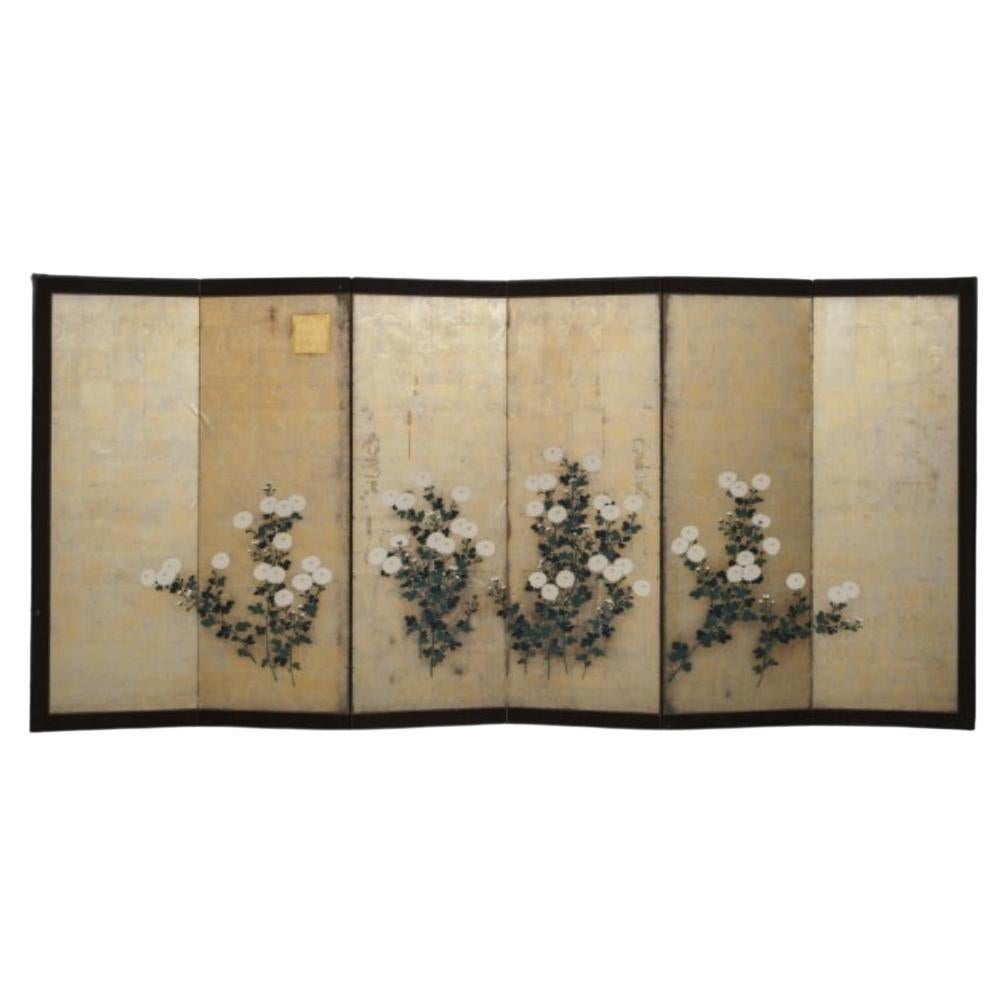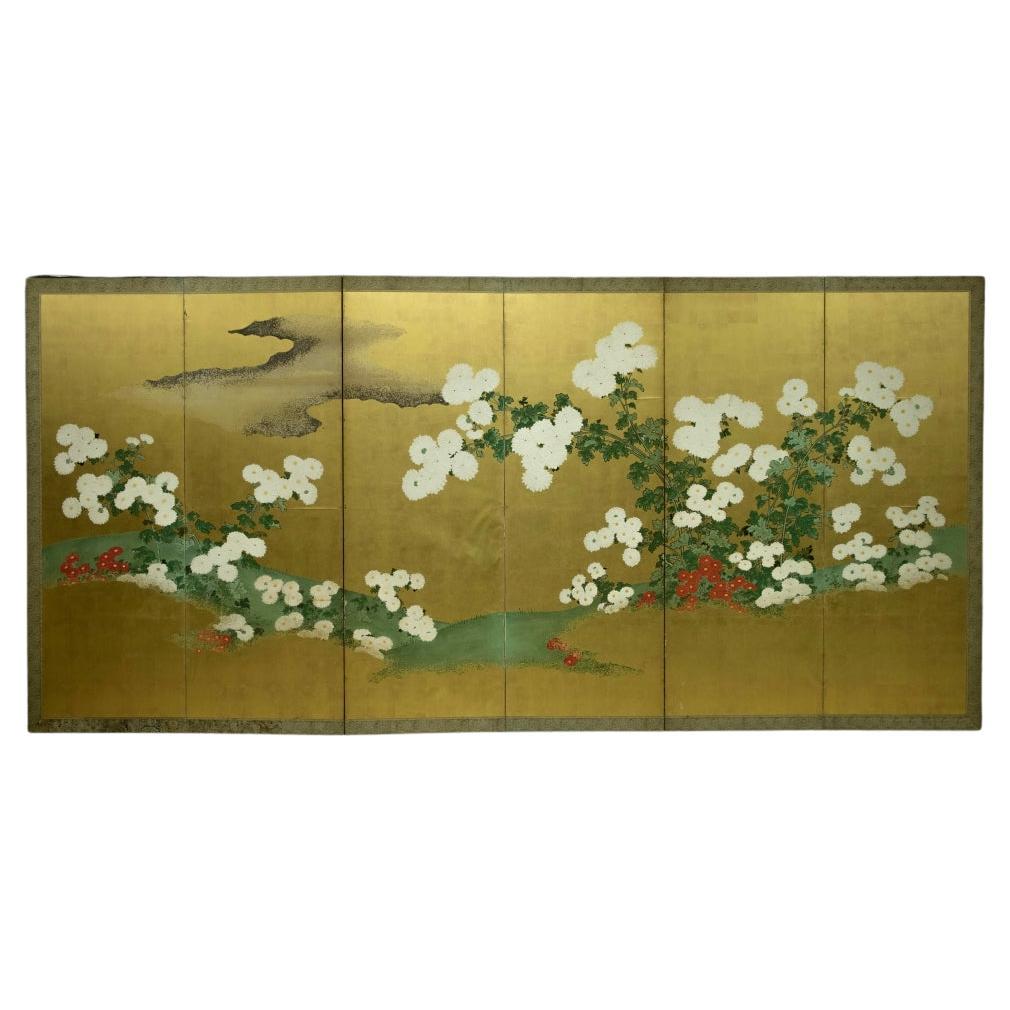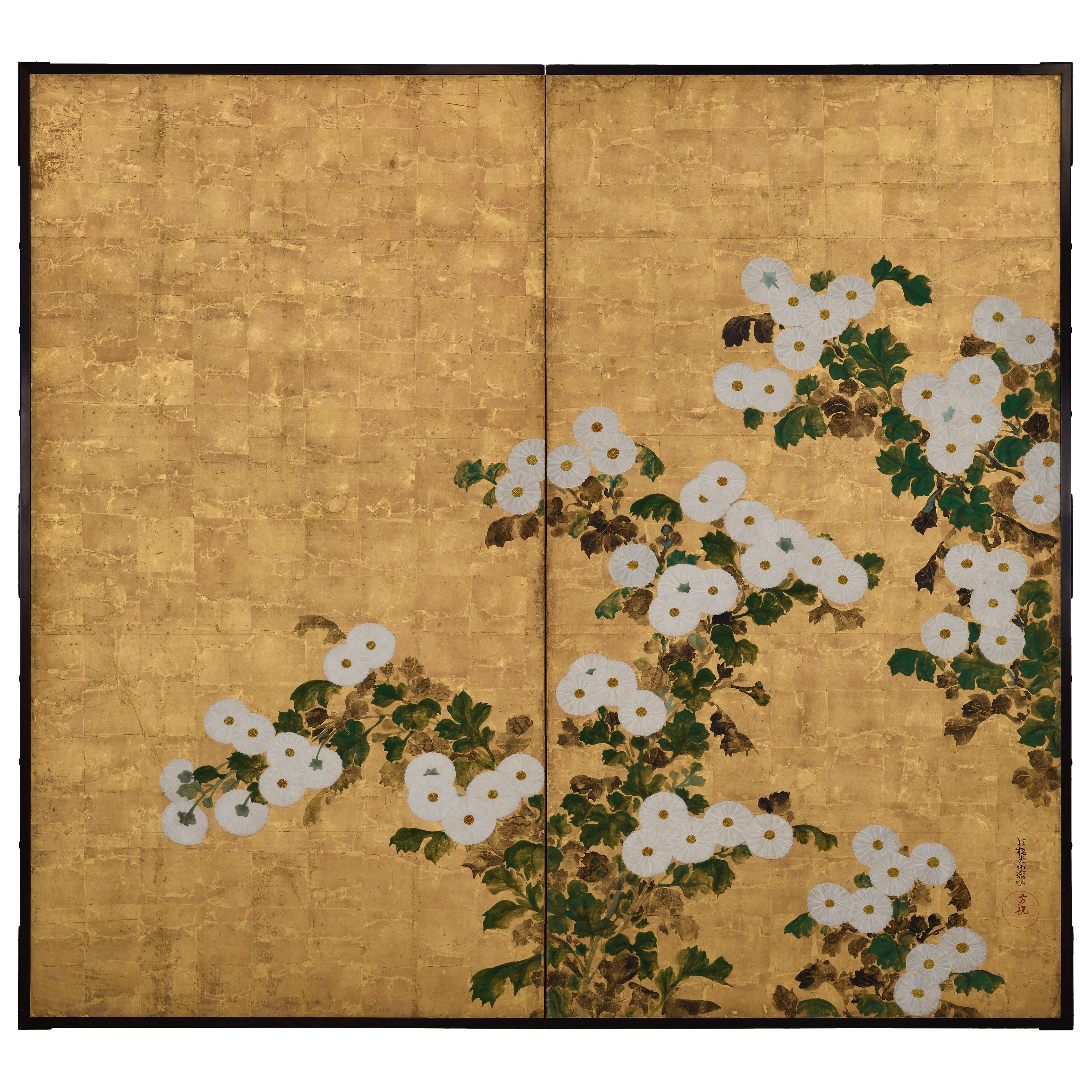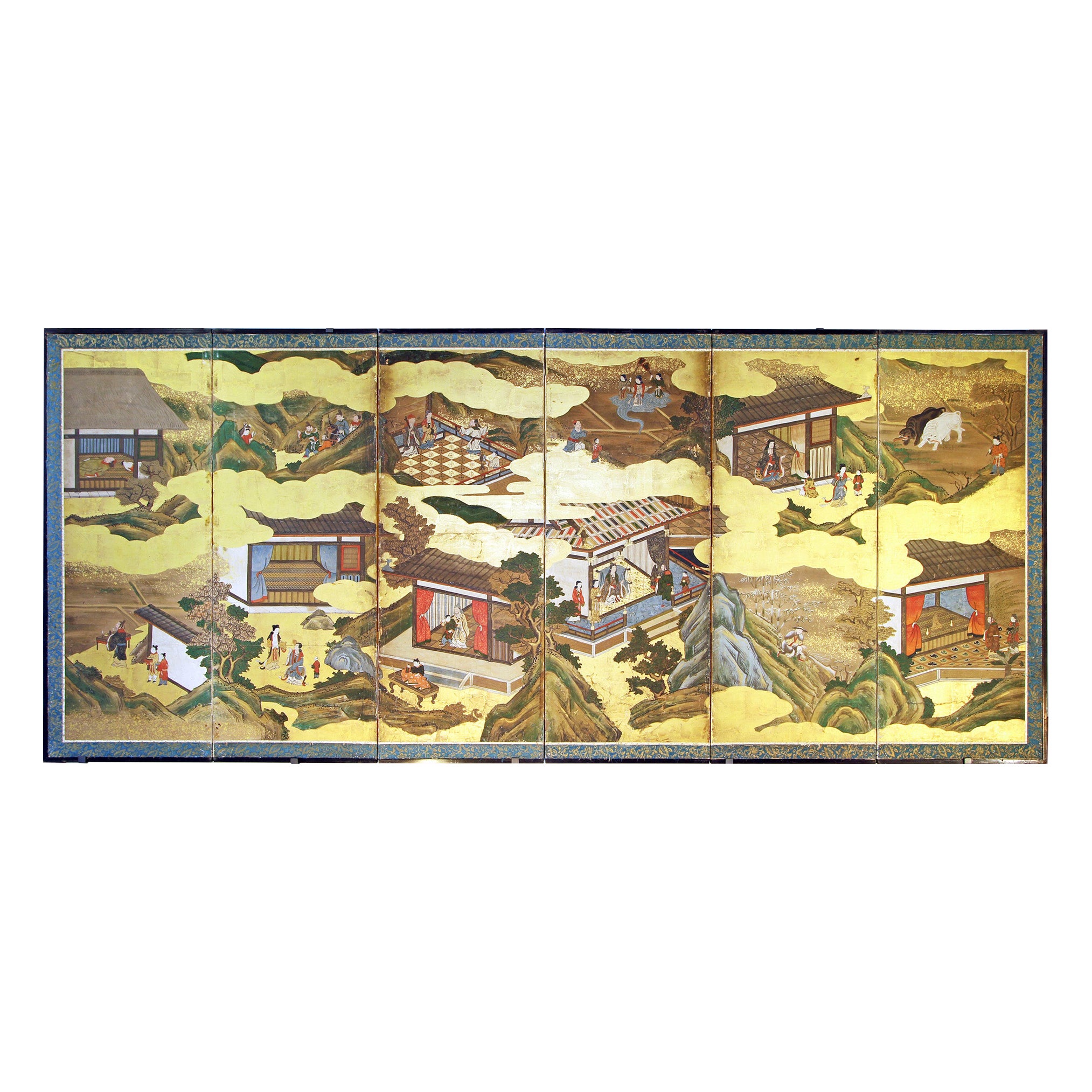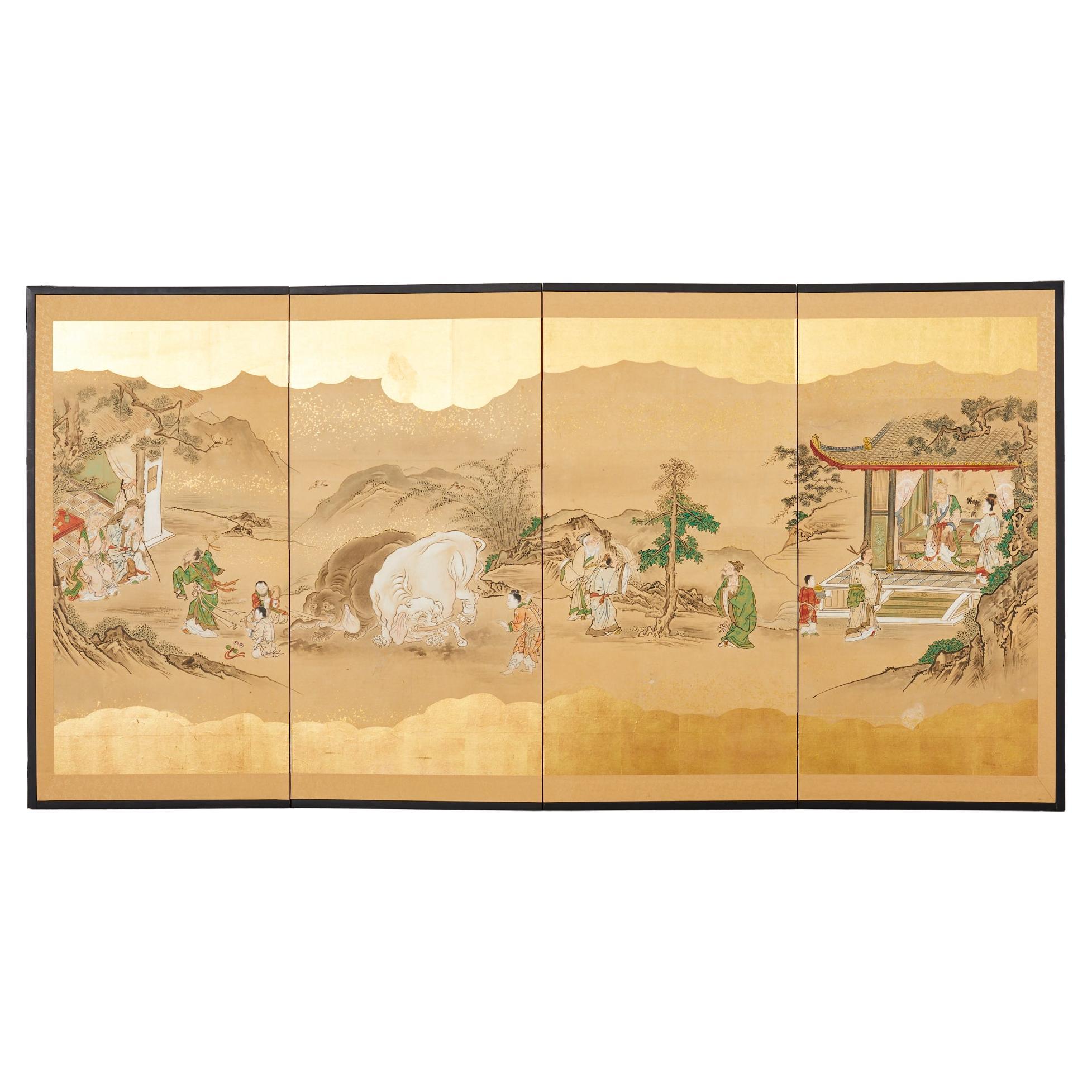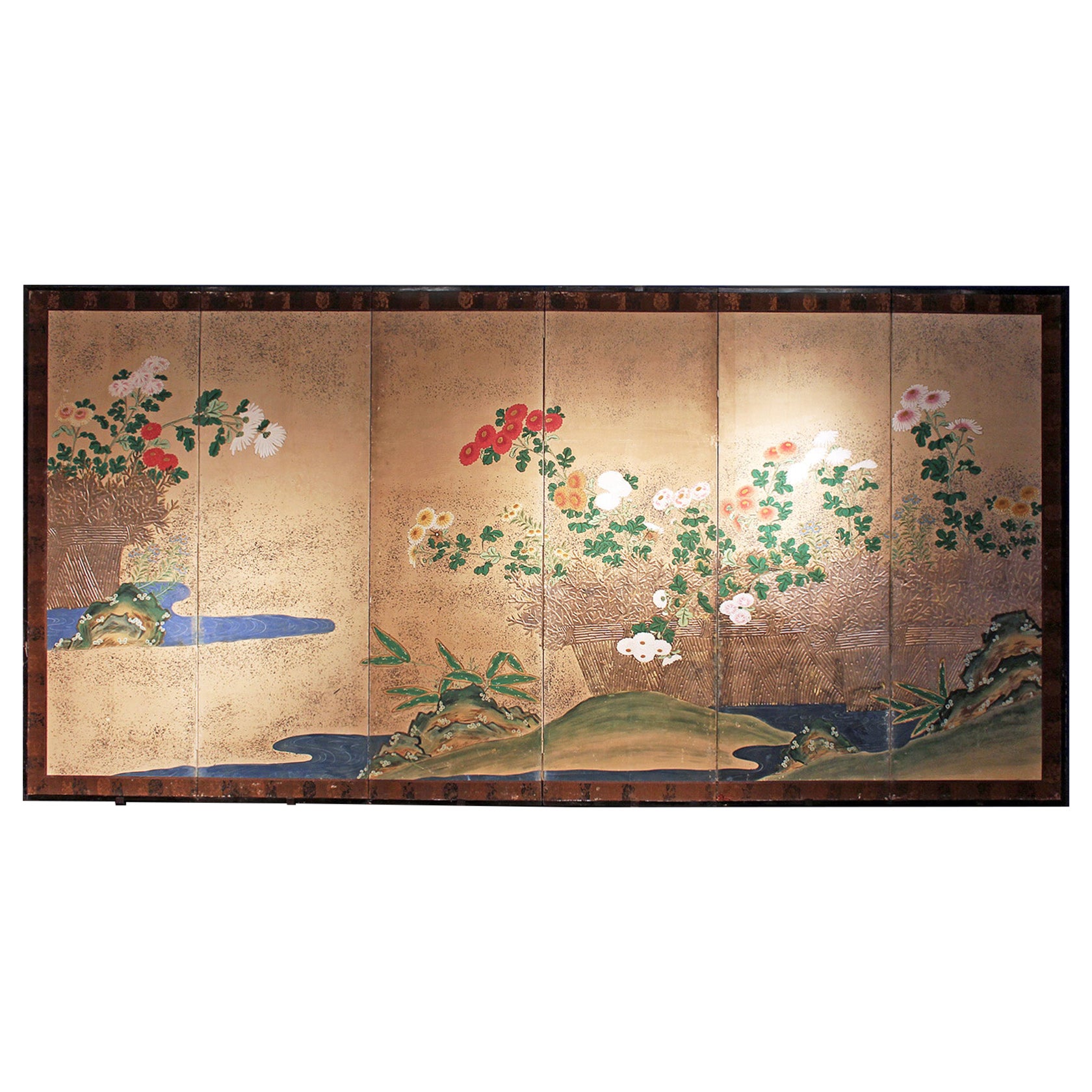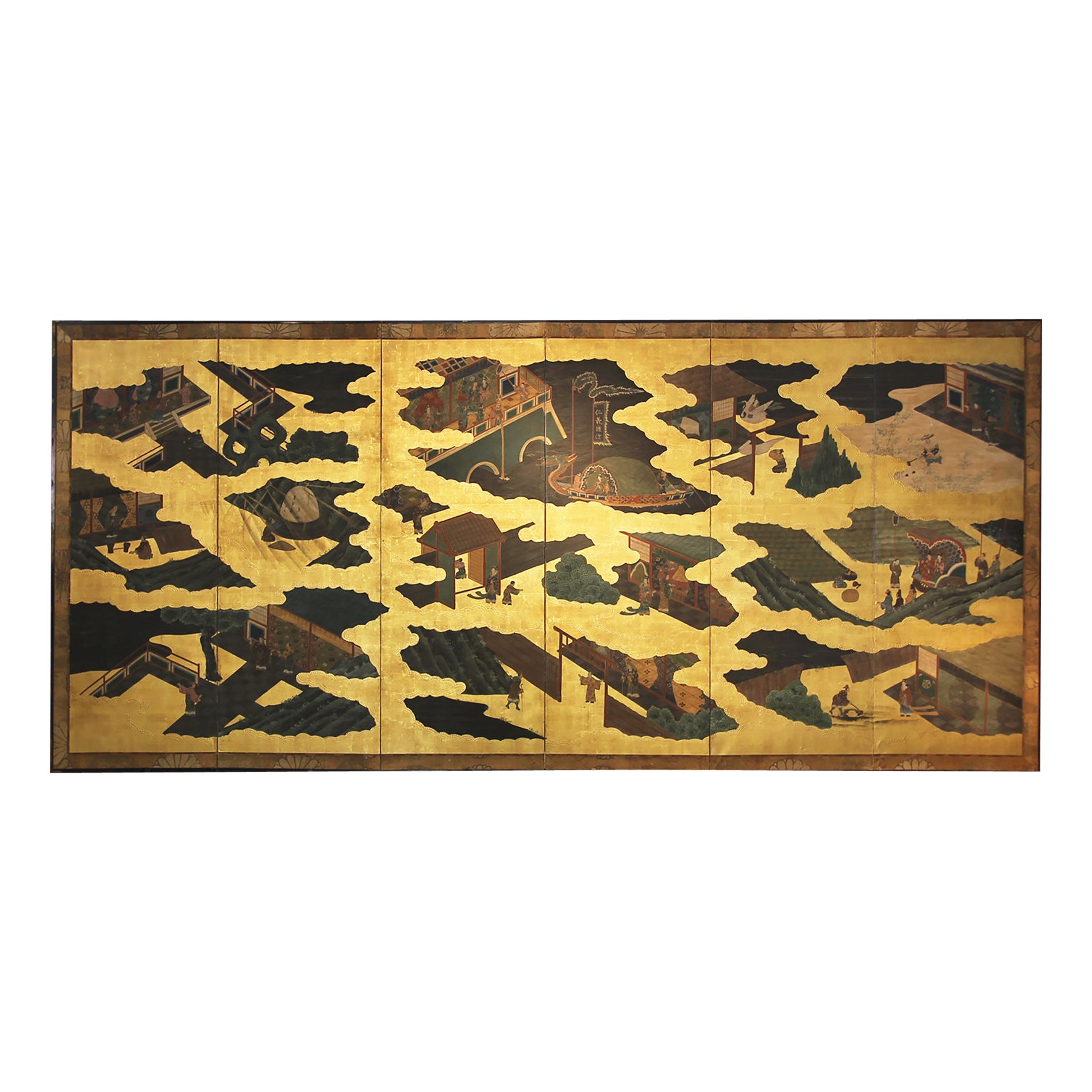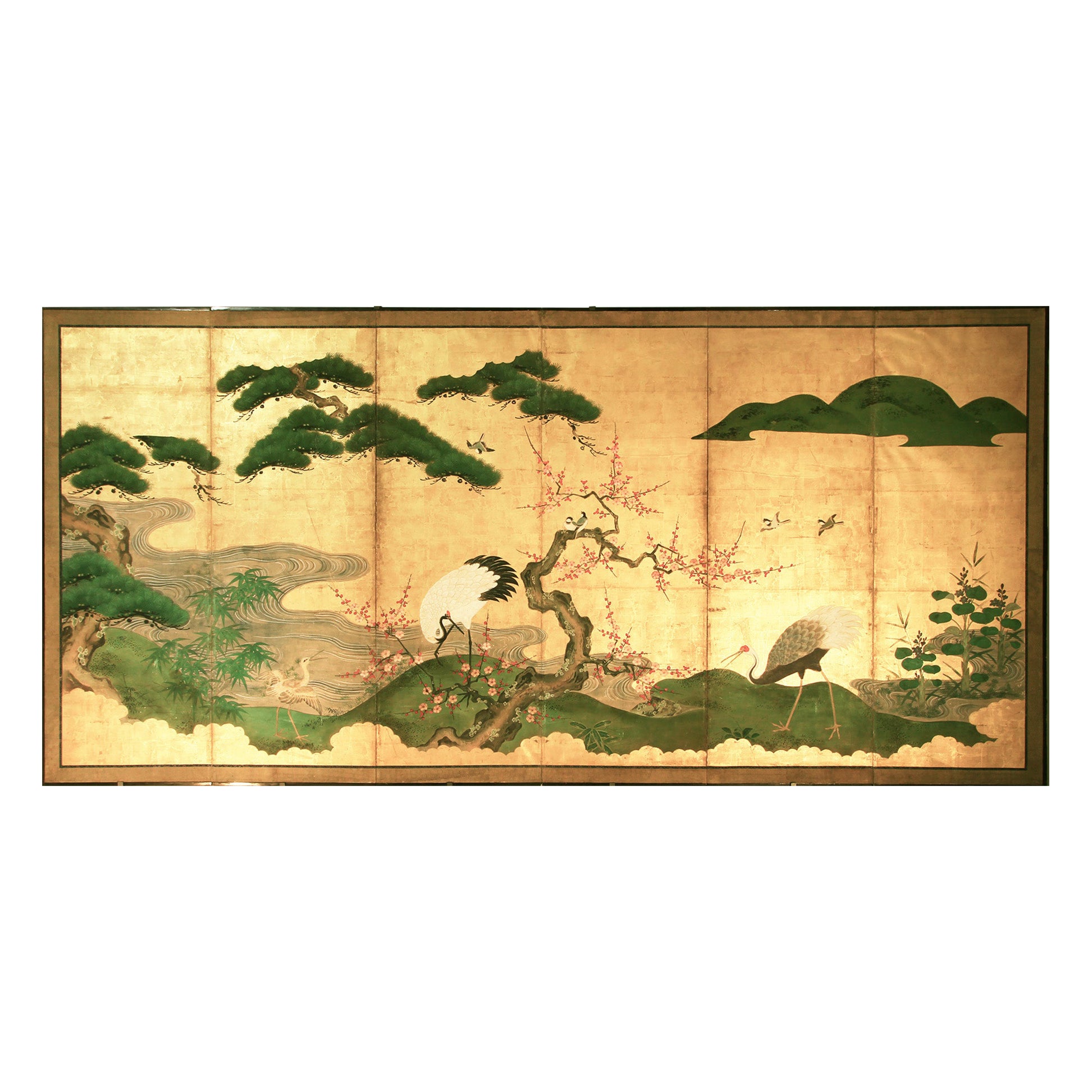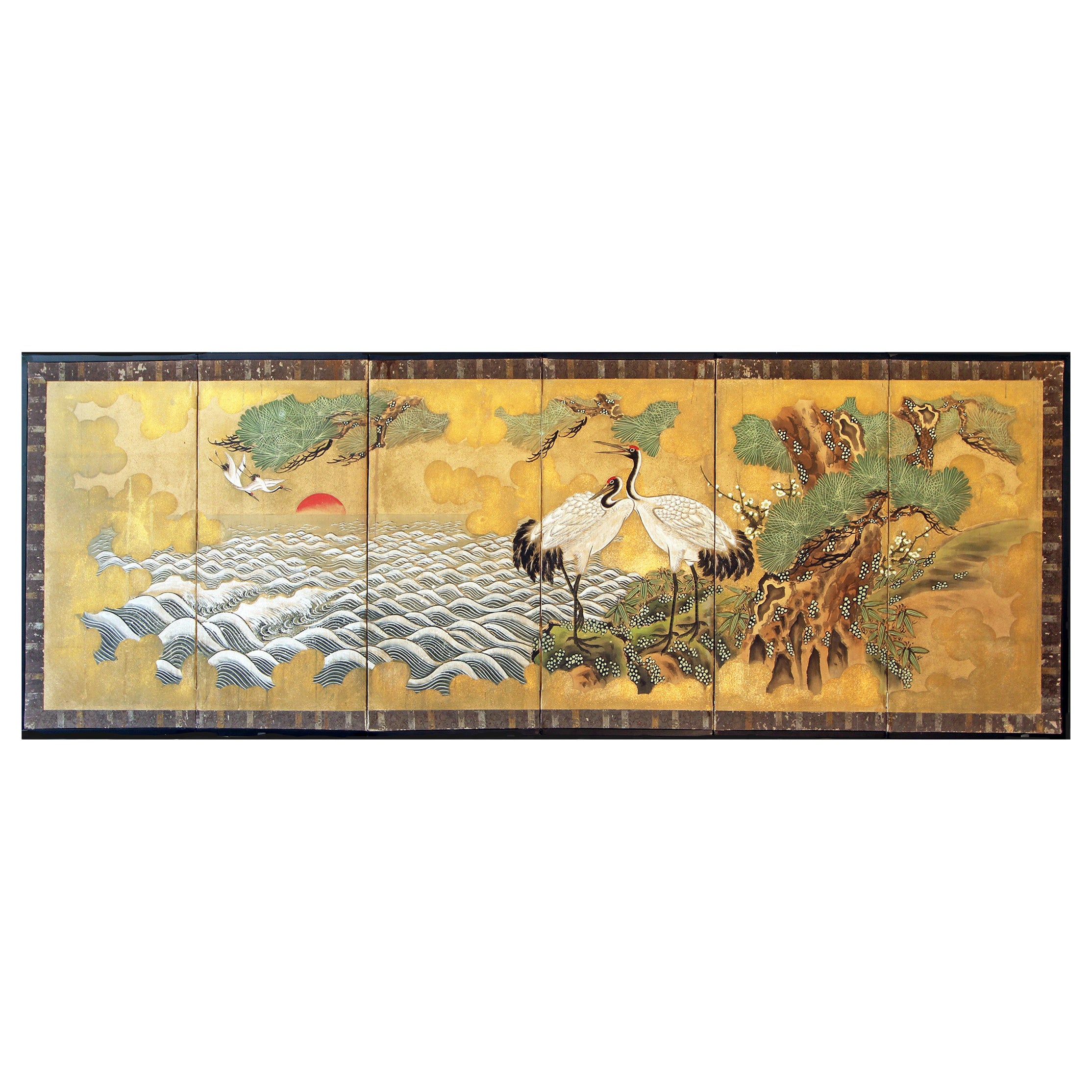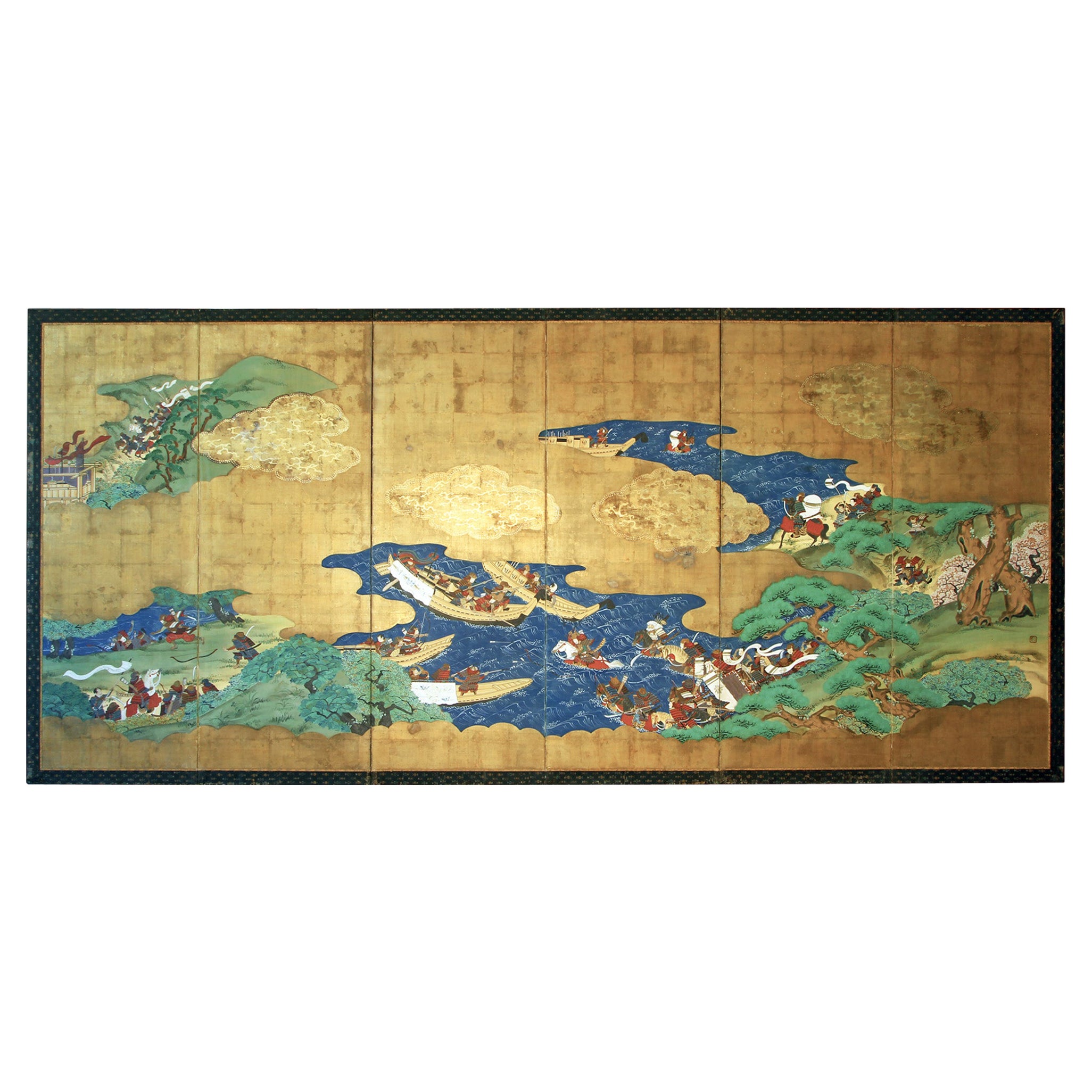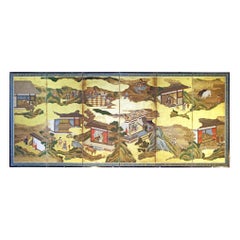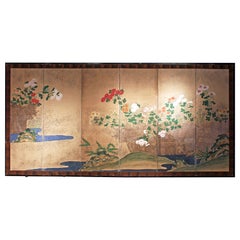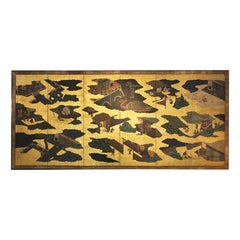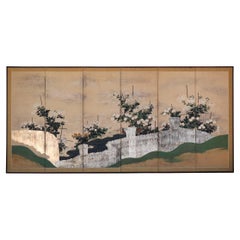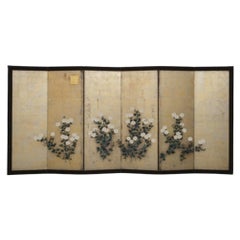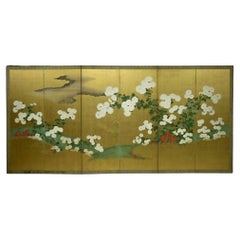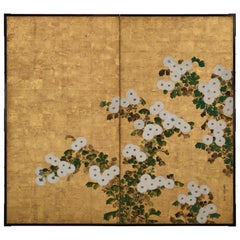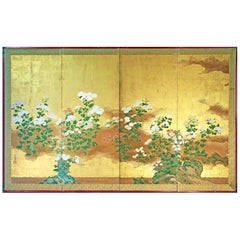
Paravento dorato a quattro pannelli di scuola Rinpa
View Similar Items
Want more images or videos?
Request additional images or videos from the seller
1 of 7
Paravento dorato a quattro pannelli di scuola Rinpa
About the Item
- Creator:Japanese Studio (Artist)
- Dimensions:Height: 53.55 in (136 cm)Width: 85.44 in (217 cm)Depth: 0.79 in (2 cm)
- Style:Edo (Of the Period)
- Materials and Techniques:
- Place of Origin:
- Period:
- Date of Manufacture:1780 circa
- Condition:Wear consistent with age and use.
- Seller Location:Brescia, IT
- Reference Number:1stDibs: LU5628237773112
About the Seller
5.0
Recognized Seller
These prestigious sellers are industry leaders and represent the highest echelon for item quality and design.
Established in 1981
1stDibs seller since 2021
17 sales on 1stDibs
Typical response time: 1 hour
Authenticity Guarantee
In the unlikely event there’s an issue with an item’s authenticity, contact us within 1 year for a full refund. DetailsMoney-Back Guarantee
If your item is not as described, is damaged in transit, or does not arrive, contact us within 7 days for a full refund. Details24-Hour Cancellation
You have a 24-hour grace period in which to reconsider your purchase, with no questions asked.Vetted Professional Sellers
Our world-class sellers must adhere to strict standards for service and quality, maintaining the integrity of our listings.Price-Match Guarantee
If you find that a seller listed the same item for a lower price elsewhere, we’ll match it.Trusted Global Delivery
Our best-in-class carrier network provides specialized shipping options worldwide, including custom delivery.More From This Seller
View AllTwo-panel screen of " Rinpa School"
By Japanese Studio
Located in Brescia, IT
Floral scene of a Rimpa School garden with polychrome chrysanthemum flowers.
Two-panel screen painted in pigment on gilded rice paper of beautiful size and well preserved.
Bold color...
Category
20th Century Japanese Showa Paintings and Screens
Materials
Gold Leaf
Japanese Tosa School Framed Six Panel Screen Gold Leaf
By Japanese Studio
Located in Brescia, IT
Japanese six-panel screen of the famous "Tosa school" made by an anonymous artist of the mid-18th century, work painted in the classic way with colored pigments and inks on vegetable...
Category
Antique Mid-18th Century Japanese Edo Paintings and Screens
Materials
Gold Leaf
Six-Panel Japanese Screen
By Japanese Studio
Located in Brescia, IT
Six-panel screen of Rinpa school, painted with mineral pigments and gofun on vegetable paper and silver leaf.
Category
Antique Early 19th Century Japanese Edo Paintings and Screens
Materials
Silver Leaf
Six-panel gold leaf screen
By Japanese Studio
Located in Brescia, IT
Large Japanese six-panel screen, ink, color, gold, and gold leaf on paper, depicting three scenes from Genji monogatari (The Tale of Genji), the vignettes punctuated by raised golden...
Category
Antique Early 19th Century Japanese Edo Paintings and Screens
Materials
Gold Leaf
$16,204
Byobu - Japanese Screen "Kano School" Gold Leaf
By Japanese Studio
Located in Brescia, IT
Japanese Kano School Six Panel Screen: Landscape with Beautiful and Elegant Cranes near the River, with Pines and Sakura.
Hand painted with mineral pigments and inks on vegetable pap...
Category
Antique Late 18th Century Japanese Edo Paintings and Screens
Materials
Gold Leaf
Japanese Byobu - Six Panel Japanese Screen
By Japanese Studio
Located in Brescia, IT
This 18th century "Kano school" six-panel screen is truly special. The author is unknown, but his singular genius in portraying these cranes near the water creates an emotion that ca...
Category
Antique Late 18th Century Japanese Edo Paintings and Screens
Materials
Paper
You May Also Like
“Kiku Byobu”, a six-panel chrysanthemum folding screen, Rinpa School
Located in Point Richmond, CA
“Kiku Byobu”, a six-panel chrysanthemum folding screen, Rinpa School, Meiji Period (1869-1912).
Painted with several variations of white moriage chrysanthemums interspersed with sma...
Category
Antique Late 19th Century Japanese Meiji Paintings and Screens
Materials
Paper
Byôbu Screen 屏風 Chrysanthemums, Rinpa School, Edo / Meiji period
By Rinpu Sasaki
Located in Valladolid, ES
One of a kind and very refined Japanese screen or byôbu 屏風 with six folding panels depicting chrysanthemums on a gold background. Fine lacquered wooden frame with metal fittings that protects and supports the work. Dating from the 19th century, between the late Edo period (1603-1868) and the early Meiji period (1868-1912),
The main motif of this beautiful byôbu is a serene Rinpa School painting on a gold background depicting a peaceful flower garden filled with white chrysanthemums. The painting reflects the gentle elegance characteristic of the Rinpa school, known for its refined depiction of nature. In Japanese culture, chrysanthemums symbolize happiness, love, longevity and joy.
Rinpa or Rimpa is the name of one of the most important schools of Japanese painting. It emerged in the 17th century with the artists Honami Kōetsu...
Category
Antique 1880s Japanese Edo Paintings and Screens
Materials
Gold Leaf, Silver Leaf
Late Edo Period Rinpa School Chrysanthemum Blossom Screen
By Rimpa School
Located in Fukuoka, JP
Late Edo Period Rinpa School Chrysanthemum Blossom Screen
Period: late Edo, early 19th century
Size: 364 x 172 cm (143 x 67 inches)
SKU: PTA13
This exquisite late Edo period Rinpa ...
Category
Antique 18th Century Japanese Edo Paintings and Screens
Materials
Paper
18th Century Japanese Rinpa Screen. White Chrysanthemums. School of Korin.
Located in Kyoto, JP
School of Ogata Korin
White Chrysanthemums
18th Century, Edo period.
A two-panel Japanese screen. Ink, color, gofun and gold leaf on paper.
Dimensions: H. 171 cm x W. 188 cm (67.5” x 74”)
On this two-panel Japanese screen we see blooming chrysanthemums, a flower which embodies the essence of autumn in Japan. Here the traditional floral theme has been simplified and stylized. The bright colors and asymmetrical composition against the delicate gold leaf create a luxurious and ornate work of art. Its background, a strikingly patinated grid of gold leaf, denies any sense of place or time and imbues everything with an ethereal glow. The leaves and stems of the plants are nothing more than pools of mottled color and ink without any outline whatsoever. These are typical Rinpa adaptations of traditional ink painting methods; tarashikomi, or diluted washes of color blended while very wet, and mokkotsu, or “bonelessness,” which creates forms without exterior outlines. The relief work of the rounded flower petals has been obtained by the moriage process (a mixture based on ground shells modeled on the surface of the paper).
On the lower right of the screen, the siganture “Hokyo Korin Jakumyo” and the “Hoshuku” seal can be read. Korin is Ogata Korin, famed for the Irises (Nezu Museum) and Red and White Plum Blossom (MOA Museum of Art) folding screens, both National Treasures. Korin worked in both Kyoto and Edo in the mid-Edo period. Korin was using the art name “Jakumyo” just after he received the Hokyo level, which was in 1701.
This particular screen was published in May of 1961 in the Japanese Sansai Fine Art Magazine*. An in depth article accompanies the photograph of the screen and and a photograph of the signature and seal. This article devotes much of its body to discussing the moriage technique, how it enlivens the chrysanthemum flowers and Korin’s specific skill in using the technique. The article goes on to discuss the most famous works of Korin, utilizing this technique, which were known at the time. Specifically a two-panel screen held in the Honolulu Museum which was discovered in the store-house of Takahashi Soan. A two-panel screen pair which the Nakano family own. A two-panel screen pair with chrysanthemums in moriage in fan designs owned by the Nomura family. Also a small folding screen featuring chrysanthemums held in the Yamato Bunkakan. The article goes on to say that this particular two-fold screen came from the Nijo family. Korin is known to have had a strong connection with the aristocratic Nijo family. The article explains that Korin received a lot of favors from the Nijo family and that this screen would have been gifted to them.
Since that time the Honolulu screen has been amended to ‘attributed to Ogata Korin’ and I do not know further details of the other 3 screens. Other Chrysanthemum screens...
Category
Antique 18th Century Japanese Edo Paintings and Screens
Materials
Gold Leaf
Japanese Edo Four Panel Screen Kano School Filial Piety
Located in Rio Vista, CA
Early 19th century late Edo period Japanese four-panel screen depicting examples from the 24 paragons of filial piety. Painted in the Kano School style featuring figures in colorful,...
Category
Antique 19th Century Japanese Edo Paintings and Screens
Materials
Brass, Gold Leaf
Japanese Four Panel Screen, Golden Sun Through Turbulent Surf
Located in Hudson, NY
Golden sun viewed through red maple above turbulent waves. Mineral pigments on gold and silver ground with silk brocade border.
Category
Mid-20th Century Japanese Paintings and Screens
Materials
Gold Leaf, Silver Leaf
Recently Viewed
View AllMore Ways To Browse
Japanese Rimpa Screens
Japanese Screen Rinpa
Lotus Wood Panel
Heian Furniture
Japanese Divider Screen
Antique Dragon Painting
Large Japanese Folding Screen
Qing Lacquer Screens
Asian Art Painting Pair Wood Panel
Japanese Autumn Screen
Japanese Pheasant
Crane Bird Painting
De Gournay
Heian Period
19th Century Chinese Painting On Silk Screen
Chinese Window Panel
Edo Period Folding Screens
Japanese Screen Snow
